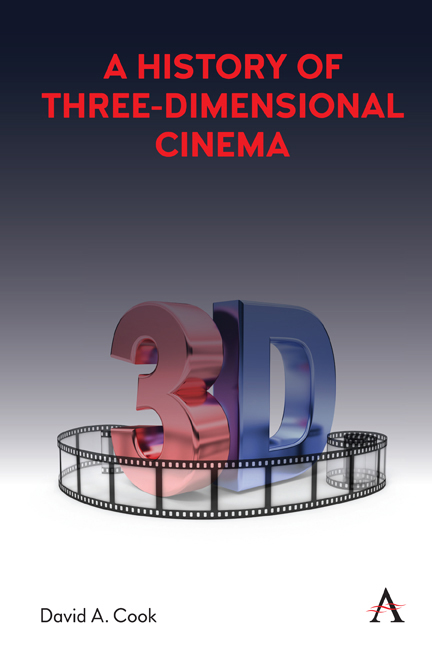Book contents
- Frontmatter
- Dedication
- Content
- List of Figures
- Acknowledgements
- Prefatory Note/Introduction
- 1 “A New Way to Simulate Presence”: The Foundations of Stereoscopic Entertainment, 1427–1888
- 2 “A Very Vivid Impression of Movement”: Early 3D Cinema, 1895–1952
- 3 “See It in 3 Dimension!”: The First Hollywood 3D Boom, 1952–55
- 4 Stereoscopic Revival, 1970–85
- 5 The Age of IMAX, or the “Immersive Cinema,” 1986–2009
- 6 The Blockbuster Years: Digital 3D, 2010–20
- 7 “A Different Kind of Mental Image”: Some Aesthetic Considerations about 3D
- 8 “Experience on Demand”: Virtual Reality
- 9 Conclusion
- 3D Discography: Discs Viewed or Sampled in Preparation for This Book
- Selected Bibliography
- Index
3 - “See It in 3 Dimension!”: The First Hollywood 3D Boom, 1952–55
Published online by Cambridge University Press: 22 October 2021
- Frontmatter
- Dedication
- Content
- List of Figures
- Acknowledgements
- Prefatory Note/Introduction
- 1 “A New Way to Simulate Presence”: The Foundations of Stereoscopic Entertainment, 1427–1888
- 2 “A Very Vivid Impression of Movement”: Early 3D Cinema, 1895–1952
- 3 “See It in 3 Dimension!”: The First Hollywood 3D Boom, 1952–55
- 4 Stereoscopic Revival, 1970–85
- 5 The Age of IMAX, or the “Immersive Cinema,” 1986–2009
- 6 The Blockbuster Years: Digital 3D, 2010–20
- 7 “A Different Kind of Mental Image”: Some Aesthetic Considerations about 3D
- 8 “Experience on Demand”: Virtual Reality
- 9 Conclusion
- 3D Discography: Discs Viewed or Sampled in Preparation for This Book
- Selected Bibliography
- Index
Summary
Hollywood at the brink
The year 1948 was a terrible one for the American film industry: television was spreading through the country like a plague, the anti-Communist witch hunt and blacklist reared their ugly heads, and the Supreme Court had ordered the demonopolization of the studio system in the United States v. Paramount decision, resulting in the “Paramount Decrees” in May. In 1946, weekly motion picture attendance peaked at an all-time high of 100 million, or twothirds of the population; by the end of 1948 it had declined to 75 million—the lowest number since the Great Depression—and in 1952 it declined still further to half the 1946 figure. It was all bad news, but the worst of it was the little black-and-white box called television. When it was introduced as a mass entertainment medium in the United States just before the Second World War, there had been argument among its promoters as to whether it should be marketed as “radio with pictures” or “movies in the home.” After a brief hiatus to accommodate wartime manufacturing restrictions, they decided to go with the latter—going in head-to-head competition with the world's most powerful leisure time industry, and by 1948 they were starting to win: in that year 1 million Americans owned television sets, and two years later there were ten times that many; general diffusion of the product followed during the next decade, and by 1960 market saturation was complete. After some fumbling attempts to buy up the TV networks (foiled by the Supreme Court's 1948 divestiture order), the Hollywood majors saw that they would have to fight the small-box cancer on its own terms—with image size, sound, and color.
First, since television was still a black-and-white medium, the film industry attempted a conversion to full-color production, stimulated by a conversion from three-color Technicolor to far cheaper single-strip Kodak Eastmancolor stock. (The now notorious fading problems with Eastmancolor nearly caused a generation of 1950s color films to be lost until digital restoration became possible in the 1990s.) In 1947, only 12 percent of American features were made in color; by 1954 the figure had risen to more than 50 percent, and by 1975 to 95 percent.
- Type
- Chapter
- Information
- A History of Three-Dimensional Cinema , pp. 25 - 60Publisher: Anthem PressPrint publication year: 2021



